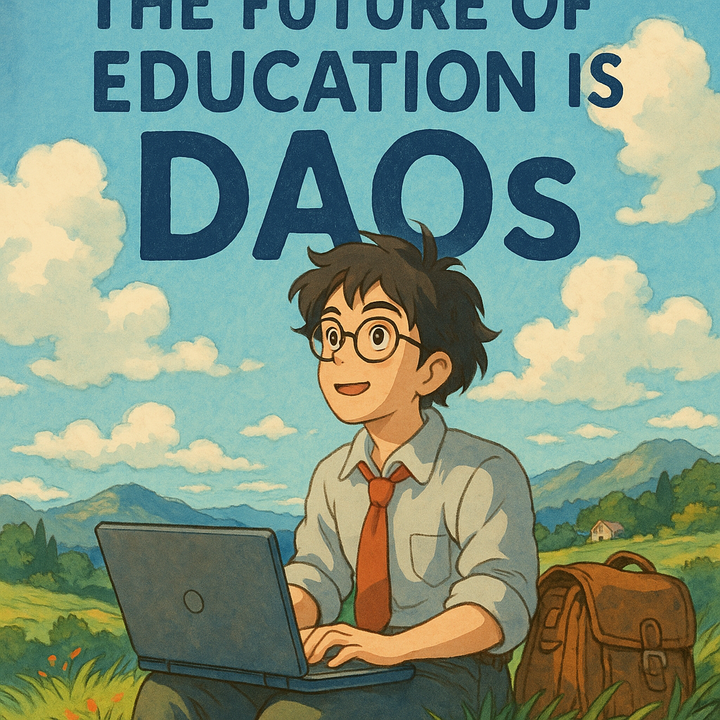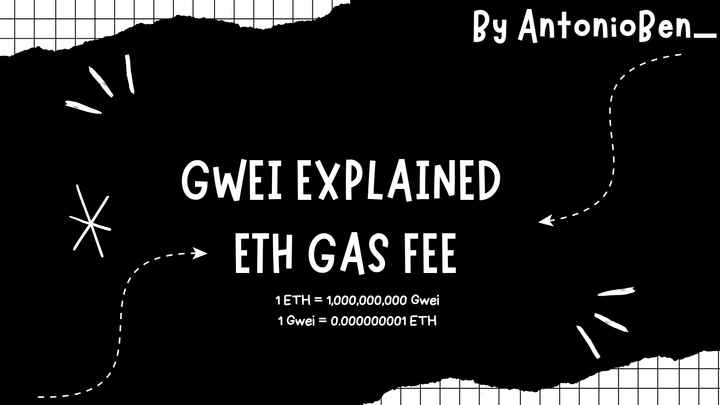The Decentralized Classroom: How DAOs Are Reshaping Education in 2025
Overview: The Rise of Community-Governed Learning in Web3
The traditional models of education, often characterized by centralized institutions and rigid structures, are facing a profound re-evaluation in the digital age. This article explores how(https://example.com/daos-explained) are emerging as powerful forces in transforming the educational landscape.
We will delve into the concept of decentralized universities, where learning communities are governed by their participants, and examine the shift in student roles from passive learners to active contributors who can learn, contribute, and even earn. Through 2025 case studies, we will highlight how various DAO platforms, including Mitosis,(https://www.talentlayer.org/), and(https://www.edudao.org/), are building the infrastructure for this new era of collaborative and equitable learning.
Introduction: The Digital Age and the Call for Educational Evolution
The digital age has brought unprecedented access to information, yet the core structures of education have often struggled to adapt. Centralized institutions, while foundational, can sometimes be slow to innovate, opaque in governance, and limited in their ability to offer truly personalized or globally accessible learning experiences.
This has created a demand for more flexible, transparent, and community-driven educational models. Enter(https://example.com/daos-explained), which are now stepping into this void, offering a new paradigm for how learning communities can be organized, governed, and funded. These self-governing entities, built on collective decision-making, promise to democratize access to knowledge and empower learners in ways previously unimaginable.
Decentralized Autonomous Organizations (DAOs): A New Governance Model
(https://example.com/daos-explained) represent a fundamental shift in organizational structure, moving from centralized control to governance by agreement. Resembling early online communities, particularly those centered around open-source projects, DAOs encode governance rules within "smart contracts" on a blockchain.
A key function of a(https://example.com/dao-functions) is collective decision-making, typically carried out through a series of proposals where members vote on organizational events using governance tokens, signifying relative influence within the DAO. As of 2024, over 13,000 DAOs collectively manage decisions across various sectors, with a total treasury of $24.5 billion and 11.1 million governance token holders.
Decentralized Universities: Governing Learning Communities
The concept of "decentralized universities" is gaining traction, with(https://example.com/daos-in-education) at their core. These DAOs govern learning communities by enabling participants to collectively make decisions on curriculum development, resource allocation, and even faculty selection. This model aims to improve transparency, fairness, and inclusivity in community-based decision-making, moving away from traditional top-down hierarchies.
By utilizing blockchain technology, DAOs establish governance systems that are transparent and resistant to tampering, allowing a community to coordinate and govern themselves independently of centralized control, ensuring a distributed and democratic decision-making process.
Shifting the Student's Role: From Passive Learner to Active Contributor
A fundamental transformation occurring within DAO-governed educational models is the shift in the student's role. The traditional passive consumption of knowledge is being replaced by an active "Learn → Contribute → Earn" paradigm. In this model, students are not just recipients of information; they are incentivized to engage, create, and add value to the learning community.
It is important to say that this can involve contributing to open-source educational resources, peer-to-peer teaching, or participating in research projects. Their contributions are recognized and often rewarded, blurring the lines between learning, working, and community building.
Learn-and-Earn Programs: Incentivizing Knowledge Acquisition
The "Learn → Contribute → Earn" model is already manifesting in various "learn-and-earn" crypto programs. These initiatives reward participants with tokens for completing educational courses or engaging in specific on-chain tasks. Platforms like(https://example.com/coinbase-wallet-quests) reward users for swapping tokens or minting NFTs, while(https://example.com/bitdegree-platform) offers gamified learning modules that reward with points and crypto.
Other platforms like CoinMarketCap and CoinGecko offer bite-sized educational content with quizzes, rewarding users with crypto or in-platform points, directly incentivizing knowledge acquisition and active participation.
EduDAO: Empowering Education Through Decentralized Funding
(https://www.edudao.org/) is a prime example of a DAO actively transforming education through decentralized funding. Its mission is to provide a low-cost, fully accountable funding platform for underfunded education-related organizations, while empowering local communities to drive change.(https://www.edudao.org/our-team) aims to create a collaborative ecosystem that supports educational initiatives through a bootstrapped approach, involving local meetups, hack events, and storytelling.
By leveraging a DAO structure, EduDAO ensures transparency in funding allocation and fosters community-driven decision-making for educational projects.
How might the "Learn → Contribute → Earn" model fundamentally alter traditional academic credentialing and the recognition of skills acquired outside formal institutions?
TalentLayer: Building Decentralized Talent Marketplaces for Learning and Work
(https://www.talentlayer.org/) is another significant player, building open-source infrastructure for decentralized marketplaces. While primarily focused on gig and freelance work, its underlying principles directly apply to education. TalentLayer aims to empower workers to own their own reputation and access jobs without limitation, which can extend to learning and skill development.
Its protocol network for decentralized marketplaces could facilitate direct connections between learners, educators, and projects, enabling a seamless transition from learning to contributing and earning, all while building an on-chain reputation for expertise.
Mitosis: The Role of Unified Liquidity in Educational DAOs
As educational DAOs and "Learn-to-Earn" models proliferate, the need for seamless and efficient financial infrastructure becomes critical. This is where the Mitosis protocol can play a crucial role. Mitosis, a Layer 1 blockchain designed as a dedicated liquidity layer, could provide the necessary capital efficiency for these emerging educational economies.
By unifying fragmented liquidity across various chains, Mitosis ensures that tokens earned through learning or contributions can be easily traded, utilized, or staked across the broader Web3 ecosystem, enhancing their real-world utility.
The Mitosis Vault System: Powering EOL for Educational Assets
The Mitosis Vault system could serve as a foundational component for educational DAOs. By depositing assets into Mitosis Vaults, participants in educational DAOs could contribute to a shared pool of Ecosystem-Owned Liquidity (EOL).
We can say this EOL could then be used to provide liquidity for educational tokens, fund grants for learners, or even support decentralized research initiatives. The resulting miAssets would represent these pooled funds, allowing for their seamless movement and utilization across different chains, ensuring that educational capital is always accessible and efficient.
Programmable Liquidity: Directing Capital for Learning Initiatives
A key innovation within the Mitosis ecosystem is programmable liquidity. Through its(https://docs.mitosis.org/concepts/mitosis-dao), Mitosis can dynamically allocate and direct its pooled Ecosystem-Owned Liquidity (EOL) to specific educational DAOs, learning initiatives, or even individual student grants based on predefined rules or community votes.
The above transforms liquidity into an active force that can be deployed precisely where it is most needed to foster learning and contribution, optimizing capital efficiency and supporting the growth of emerging educational models across the multi-chain landscape.
Future Outlook: The Transformative Potential of DAOs in Education
The integration of DAOs into education is still in its early stages, but the potential is vast. We can anticipate the emergence of more specialized learning DAOs, decentralized research collectives, and even credentialing DAOs that issue verifiable, on-chain academic records.
The "Learn → Contribute → Earn" model, supported by robust liquidity frameworks like Mitosis's EOL, could democratize access to high-quality education globally, making learning more engaging, equitable, and directly rewarding for participants. This shift promises a future where education is truly owned and governed by its community.
Conclusion: A Collaborative and Equitable Future for Learning
The year 2025 marks a significant period in the transformation of education by(https://example.com/daos-explained). From decentralized universities governing learning communities to the fundamental shift in the student's role towards active contribution and earning, DAOs are reshaping how knowledge is acquired and valued. Platforms like(https://www.edudao.org/) and(https://www.talentlayer.org/) are building the foundational layers for this new era. Furthermore, the integration of protocols like Mitosis, with its Vaults system and programmable liquidity, promises to provide the essential financial infrastructure, ensuring that the capital within these educational ecosystems flows seamlessly and efficiently. This collaborative approach is paving the way for a more accessible, equitable, and community-driven future for learning worldwide.
Mitosis References
🔗Links:



Comments ()